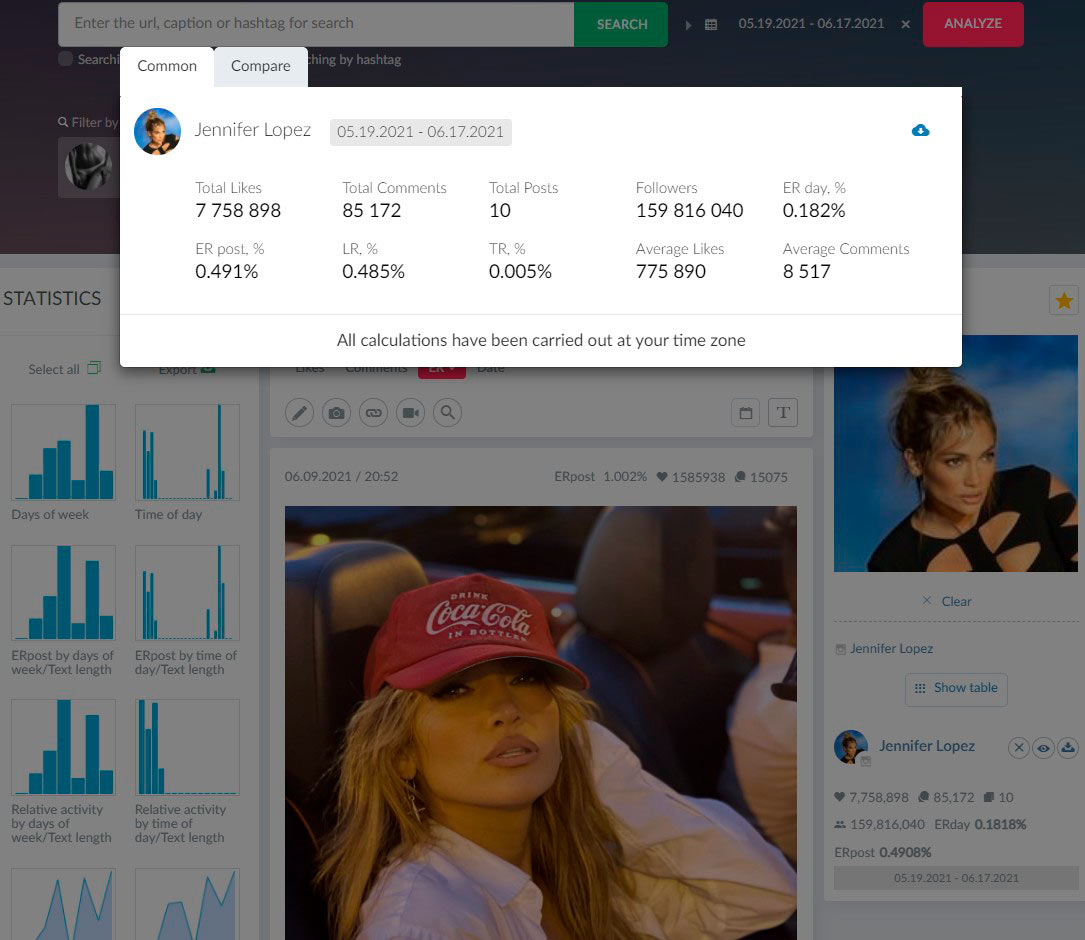How to Do an Instagram Audit: Steps for Account Growth

Audit allows identifying weaknesses and growth drivers, generate the content and promotion strategy. We discuss how to do an Instagram audit of any account – a personal blog, an influencer’s page or a brand’s page.
Step 1: Define the Objectives and Set Clear KPIs
On the first step of Instagram audit, realize what tasks the account solves. What is its purpose?
- Promote an expert’s personal brand;
- Reach to maximum audience size;
- Brand’s image;
- Communicate with users for a brand;
- Source traffic to a website;
- Generate sales for a shop.
Establish KPIs, i.e. criteria, by which you will evaluate with Instagram audit the efficiency of achievement of an objective:
- Audience activity (count of engagements with posts / contest participants);
- Quantity and quality of traffic to the website;
- Amount of sales;
- Reach of posts and stories.
The KPI for any Instagram audit shall be specific, measurable and relevant to the task.
Step 2: Account’s Brand and Positioning
It is important that the Instagram account stays within the brand’s overall communication tone, while also achieving its main goal.
A user who landed up in a coffee shop’s account needs to understand at first glance what your company has to offer and how they can get it.
Yes, there are exceptions and original creative strategies, but now we are only talking about the general rules for quality Instagram account audit — the ones you need to learn before you break them.
The profile picture, bio text, pinned Stories, descriptions under photos and comments on behalf of the account shall comply with the brand book.
Therefore, the first important question for how to do an Instagram audit at this step is: Does the account has a clear visual style and tone of communication? Do they match the brand’s communications in other channels?
Look at the bio profile picture and pinned Stories, and answer the question:
- What is the account’s subject?
- Is it clear what the brand offers / how the blogger is different from others?
- Does the style of text and pictures match the tone of the brand/blogger?
Step 3: Audit the Content Strategy
The main part of Instagram audit and the account in general is the content. It is the reason why users subscribe to your page, why they engage with posts or not, remember your company and loyally react to your ads.
Your audience needs to realize what you are and what you offer after having viewed several posts of the account, without reading them all. While you are carrying out your Instagram audit, it is worthwhile to view some posts again. So before analyzing all the posts, assess the first impression of the profile: 9 latest posts.
Analyzing Photo and Video Content on Instagram
Instagram users value account’s aesthetics, therefore all the pictures and videos posted to the feed need to go together well.
They should not look totally alike: the same processing for each and every shot was trending in 2014 to 2016. Today pictures should differ but together create a similar mood and be in a similar style. For example, several colors that keep repeating.
When you do an audit on Instagram, consider:
- Do the graphic contents share the same style?
- Are there mistakes in the feed layout: close-ups placed close to each other, too frequent same-type pictures (e.g., many pictures of a product in a row and then pictures of persons).
- Is the content diverse? Shared style does not mean sameness. Subscribers would not appreciate dozens of similar pictures in their feed.
- Do the last 9 posts make it clear (without looking at the bio and profile picture) what this account is about?
When you do an Instagram audit review every picture individually: quality, composition, originality as compared to competitors, topicality. Instagram users see quality content every day, so they will not accept “outdated” shots that look like photobank content.
Look at the shape of pictures and videos in the feed: what is the orientation? Horizontal shots (aspect ratio of 1.91:1) take less space in a user’s feed, consequently attracting less attention, while vertical ones, in 4:5 aspect ratio take almost the entire screen.
Assessing Texts on Instagram Accounts
As with analysis of any SMM community, assess the account’s content strategy:
- What categories is the content divided into?
- How often do they repeat?
- Alternation of post types: company news, product posts, helpful posts, UGC.
Is a user interested in subscribing to such account — will they get useful and inspiring content that is different from competitors’ posts?
Will they want to stay with your account or get bored by monotonous posts?
During your Instagram account audit look at the text appearance:
- Text length;
- Use of paragraphs and indentations;
- Use of emojis — appropriateness, frequency.
Use of Different Formats
Check if all the Instagram possibilities were tested in the account. Besides posts in feed, brands can record Stories, add posts to them, post video in IGTV format and stream live.
Step 4: Audience Engagement and Activity
Having done the qualitative analysis, proceed with the quantitative analysis. While you’re doing Instagram account audit evaluate all the measurable metrics:
- Subscriber count;
- Monthly/weekly/daily average post count;
- Engagement rate (ER);
- Average comment count per post;
- Like count.
To accelerate this step, check the Instagram account with Popsters.com Social media analytics tool. It will quickly calculate all the required metrics for any profile – not only yours but others’ as well. The check results can be exported in any format and attached to the Instagram audit.
At the first step, you defined your KPIs. Now calculate the results for them: engagement, reach, subscriber count.
If you analyze your own account, use the Instagram’s built-in analytics to evaluate the reach of the account and posts.
Review the results for every post over a month or two weeks and identify the best performing subjects and formats.
Step 5: Brand’s Communication
So, as part of your Instagram audit, it is important to analyze brand communication. Both brands and bloggers should work with their audiences — engage with their comments, reply in Direct.
Assess the speed and quality of replies in comments under posts:
- Replies provided to all questions and remarks
- The brand solves a user’s problem
- Reply tone matches the account’s overall tone of communication
In addition to engagements within the account, it is important to engage with mentions: even major pages and influencers like or comment posts with mentions or hashtags, post UGC in the feed or Stories.
Step 6: Instagram Account Audit with Growth Drivers
Conclude the Instagram account audit with recommendations for further work.
In the course of the analysis, you will find weaknesses. Suggest solutions for them: change the profile’s visual style, change the content strategy, improve the communication with the audience.
Include a review of Instagram trends and content marketing in the recommendations: What new formats worth testing by the brand? Which subjects should be focused on?
Propose steps to improve the account’s quality and audience size: contests, targeted ads, placement by bloggers, mutual posts or joint promotions with similar-subject accounts.
We hope this article will help you figure out how to audit Instagram account more efficient.
Useful articles on a similar topic:
- How to Create a Target Audience for Your Business;
- How to view extended statistics on Instagram;
- Best Instagram analytics tools (and metrics to track);
- Formulas for Calculating Engagement Rate: Our Complete Guide.
Try Popsters Trial plan to get content activity statistics of any pages for a next 7 days for free
Try for free






